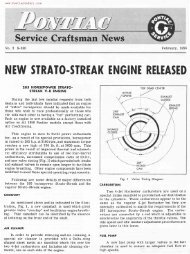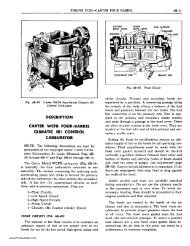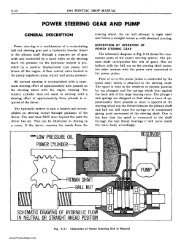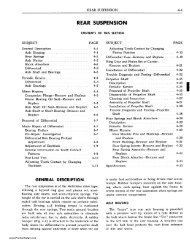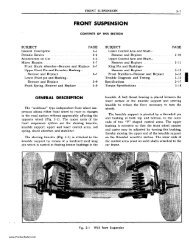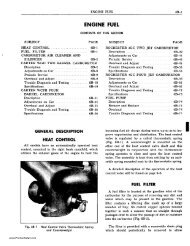Power Antenna - Pontiac Custom Safari 55 56 & 57
Power Antenna - Pontiac Custom Safari 55 56 & 57
Power Antenna - Pontiac Custom Safari 55 56 & 57
You also want an ePaper? Increase the reach of your titles
YUMPU automatically turns print PDFs into web optimized ePapers that Google loves.
These photos illustrate the two antenna types:<br />
<strong>Power</strong> <strong>Antenna</strong> – Type I<br />
19<strong>55</strong> All Models<br />
19<strong>56</strong> Station Wagons Only<br />
Mast Lead Aluminum Storage Tube<br />
Upper End of storage tube clamps to antenna<br />
mast tube<br />
Crimped end of storage tube with drain at bottom<br />
loop of tube<br />
Short power leads with rubber boots<br />
<strong>Power</strong> <strong>Antenna</strong> –Type II<br />
19<strong>56</strong> All models except Station Wagon<br />
Mast Lead Nylon Storage Tube<br />
Storage Tube clips to fuel tank flange<br />
Felt filter in drainage end of tube<br />
Long siamese power lead, no boots<br />
General Service Procedures:<br />
The most common cause of failure for the power antenna unit is a broken, bent or stuck mast.<br />
Primarily due to operator error or abuse, failure of the mast was often followed buy failure of the<br />
electric motor and/or drive mechanism.<br />
I say this because, unlike modern cars, these older power antenna units do not have an automatic stop<br />
(i.e. shut off) at the end of travel for the mast. If the toggle switch isn‟t release as soon as the mast<br />
reaches its end of travel (either up or down), damage to the unit can result. Potential damage includes<br />
a worn, warped or broken nylon mast lead; a stripped gear or gears in the drive mechanism, or even a<br />
burned out/shorted electric motor, any one of which can ruin an otherwise serviceable unit.<br />
Damage to the nylon mast lead caused by the switch being held too long with the mast fully raised, is<br />
generally characterized by a permanent “warping” of the lead and/or a heavy wear point in the lead<br />
near its lower end.



